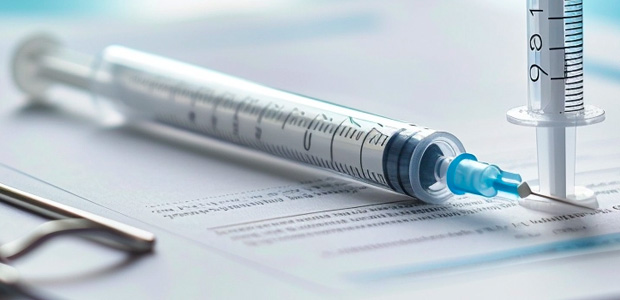 Home infusion therapy is a treatment option that allows patients to receive intravenous (IV) medications, fluids, or nutrition at home. This approach has become increasingly popular as it offers convenience, promotes patient independence, and reduces healthcare costs associated with prolonged hospital stays. However, to ensure proper reimbursement and accurate billing, healthcare providers must understand and utilize the appropriate Current Procedural Terminology (CPT) codes specific to home infusion therapy services.
Home infusion therapy is a treatment option that allows patients to receive intravenous (IV) medications, fluids, or nutrition at home. This approach has become increasingly popular as it offers convenience, promotes patient independence, and reduces healthcare costs associated with prolonged hospital stays. However, to ensure proper reimbursement and accurate billing, healthcare providers must understand and utilize the appropriate Current Procedural Terminology (CPT) codes specific to home infusion therapy services.
We offer a comprehensive overview of the CPT codes commonly used in home infusion therapy billing. It’ll cover the different categories of codes, their descriptions, and their applications in various home infusion therapy scenarios.
Understanding CPT Codes
CPT codes are a standardized set of five-digit numeric codes used by healthcare providers to report medical services and procedures to public and private insurance companies for reimbursement purposes. These codes are maintained and updated annually by the American Medical Association (AMA).
CPT Codes are Divided into Three Main Categories
- Category I: These codes describe medical services and procedures provided by physicians and other qualified healthcare professionals.
- Category II: These codes cover supplemental tracking codes used for performance measurement purposes.
- Category III: These codes are temporary codes used to track emerging technologies, services, and procedures.
In the context of home infusion therapy, healthcare providers primarily use Category I and Category III codes.
Category I CPT Codes for Home Infusion Therapy
Category I CPT codes are the most commonly used codes for reporting home infusion therapy services. These codes are further divided into subcategories based on the type of service provided.
Initial Home Infusion Therapy Services
The following CPT codes are used for the initial setup and administration of home infusion therapy:
- 96365: Intravenous infusion, for therapy, prophylaxis, or diagnosis (specify substance or drug); initial, up to 1 hour
- 96366: Intravenous infusion, for therapy, prophylaxis, or diagnosis (specify substance or drug); each additional hour (List separately in addition to code for primary procedure)
These codes are used for the initial establishment of an IV access line and the administration of the first hour (96365) and each additional hour (96366) of infusion therapy.
Subsequent Home Infusion Therapy Services
After the initial setup, the following CPT codes are used for subsequent infusion therapy sessions:
- 96367: Intravenous infusion, for therapy, prophylaxis, or diagnosis (specify substance or drug); additional sequential infusion, up to 1 hour (List separately in addition to code for primary procedure)
- 96368: Intravenous infusion, for therapy, prophylaxis, or diagnosis (specify substance or drug); concurrent infusion (List separately in addition to code for primary procedure)
Code 96367 is used for additional sequential infusions, while code 96368 is used for concurrent infusions, where multiple substances or drugs are administered simultaneously.
Hydration Therapy
The following CPT codes are used specifically for hydration therapy:
- 96360: Intravenous infusion, hydration; initial, 31 minutes to 1 hour
- 96361: Intravenous infusion, hydration; each additional hour (List separately in addition to code for primary procedure)
These codes are used for the administration of fluids for hydration purposes, with 96360 covering the initial hour and 96361 covering each additional hour.
Therapeutic, Prophylactic, or Diagnostic Injections
Certain CPT codes are used for therapeutic, prophylactic, or diagnostic injections related to home infusion therapy:
- 96372: Therapeutic, prophylactic, or diagnostic injection (specify substance or drug); subcutaneous or intramuscular
- 96374: Therapeutic, prophylactic, or diagnostic injection (specify substance or drug); intravenous push, single or initial substance/drug
These codes are used for subcutaneous, intramuscular, or intravenous push injections of medications or substances related to home infusion therapy.
Category III CPT Codes for Home Infusion Therapy
Category III CPT codes are temporary codes used to track emerging technologies, services, and procedures in home infusion therapy. These codes are often used for new or experimental treatments that are not yet covered by Category I codes.
Here are some examples of Category III CPT codes relevant to home infusion therapy:
- 0537T: Delivery of therapeutic services for patient preparation and monitoring in home for hydration, parenteral nutrition, antibiotic therapy or other intravenous therapies
- 0538T: Delivery of therapeutic services for patient preparation and monitoring in home for anticoagulant therapy
These codes are used to report services related to the preparation, monitoring, and delivery of hydration, parenteral nutrition, antibiotic therapy, intravenous therapies, and anticoagulant therapy in the home setting.
Additional Considerations
When using CPT codes for home infusion therapy, healthcare providers should keep in mind the following considerations:
- Modifiers: Certain modifiers may be required in conjunction with CPT codes to provide additional information or specify the circumstances under which the service was provided. Common modifiers used in home infusion therapy include:
- 25: Significant, separately identifiable evaluation and management service by the same physician or other qualified healthcare professional on the same day of the procedure or other service
- 59: Distinct procedural service
- Documentation: Proper documentation is crucial for accurate coding and successful reimbursement. Healthcare providers should maintain detailed records of the services provided, including the type of infusion therapy, medications or substances administered, duration of therapy, and any complications or additional services rendered.
- Compliance: Healthcare providers must ensure compliance with all applicable laws, regulations, and payer policies related to home infusion therapy coding and billing practices.
- Updates and Changes: CPT codes are regularly updated and revised by the AMA. Healthcare providers should stay informed about any changes or additions to the CPT code set to ensure accurate and compliant coding practices.
Summary
Home infusion therapy has become an increasingly important treatment modality, offering convenience and cost-effectiveness for patients requiring intravenous medications, fluids, or nutrition. To ensure proper reimbursement and accurate billing, healthcare providers must have a thorough understanding of the CPT codes specific to home infusion therapy services.
This article has provided a comprehensive overview of the Category I and Category III CPT codes commonly used in home infusion therapy, covering initial setup, subsequent infusions, hydration therapy, injections, and emerging technologies. By correctly utilizing these codes and adhering to documentation and compliance requirements, healthcare providers can ensure appropriate reimbursement and support the continued growth and accessibility of home infusion therapy services.

